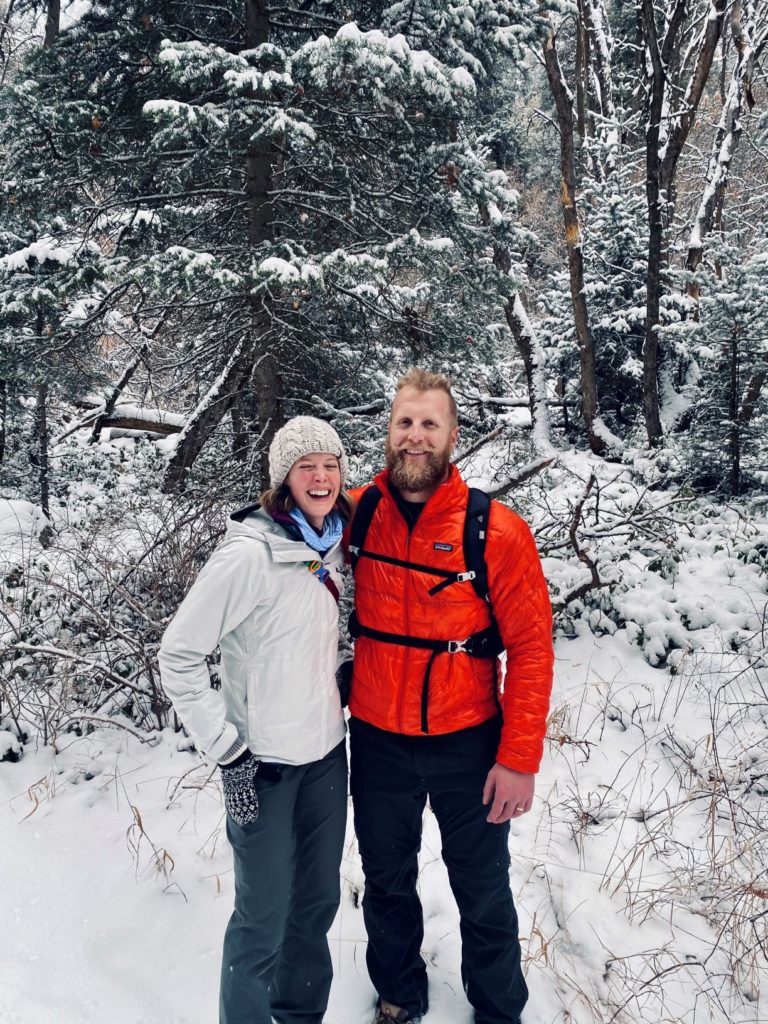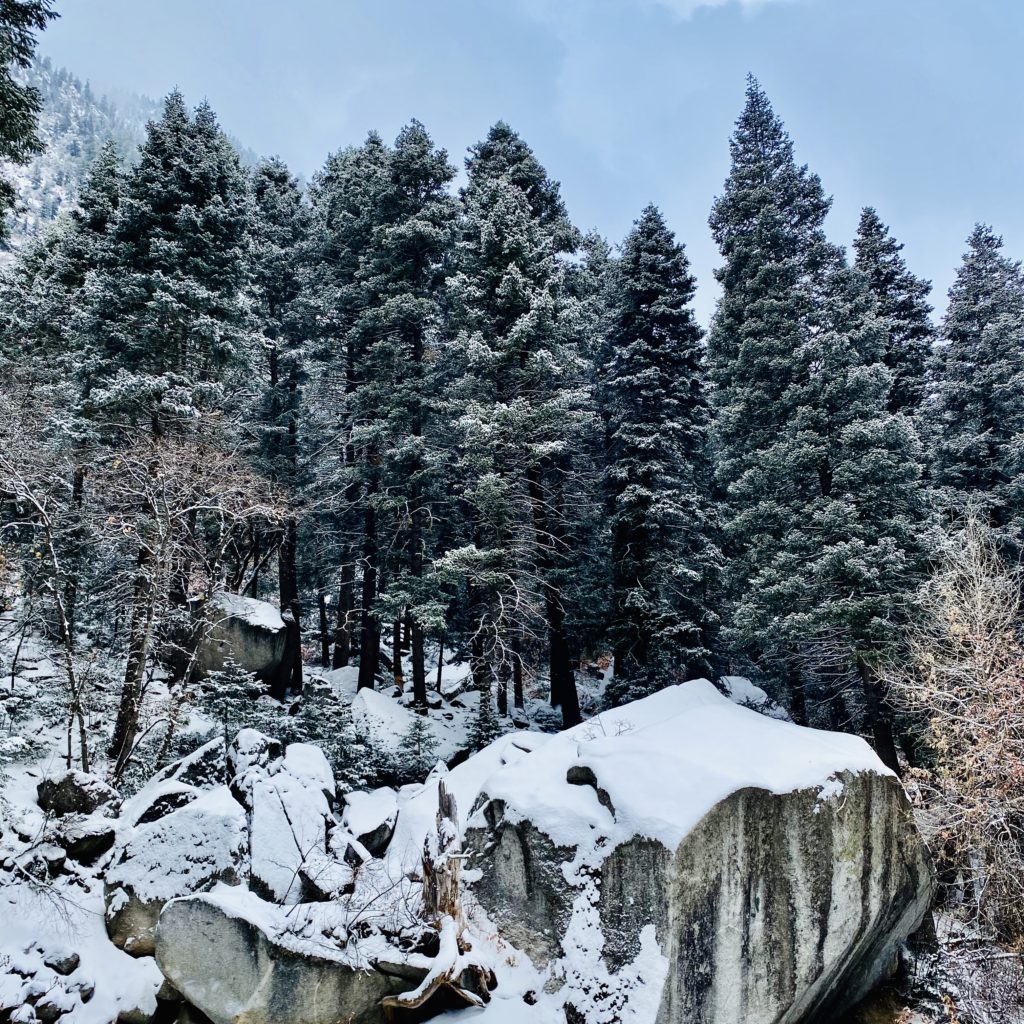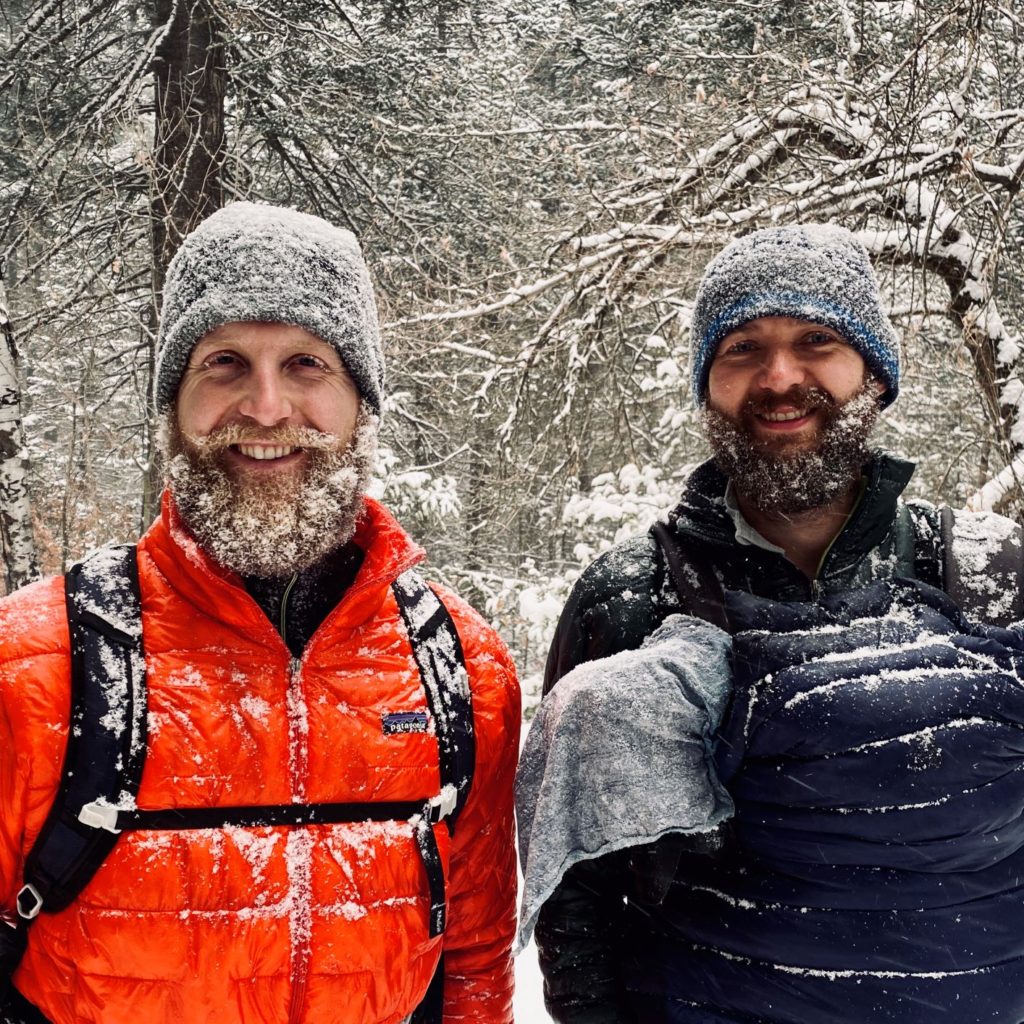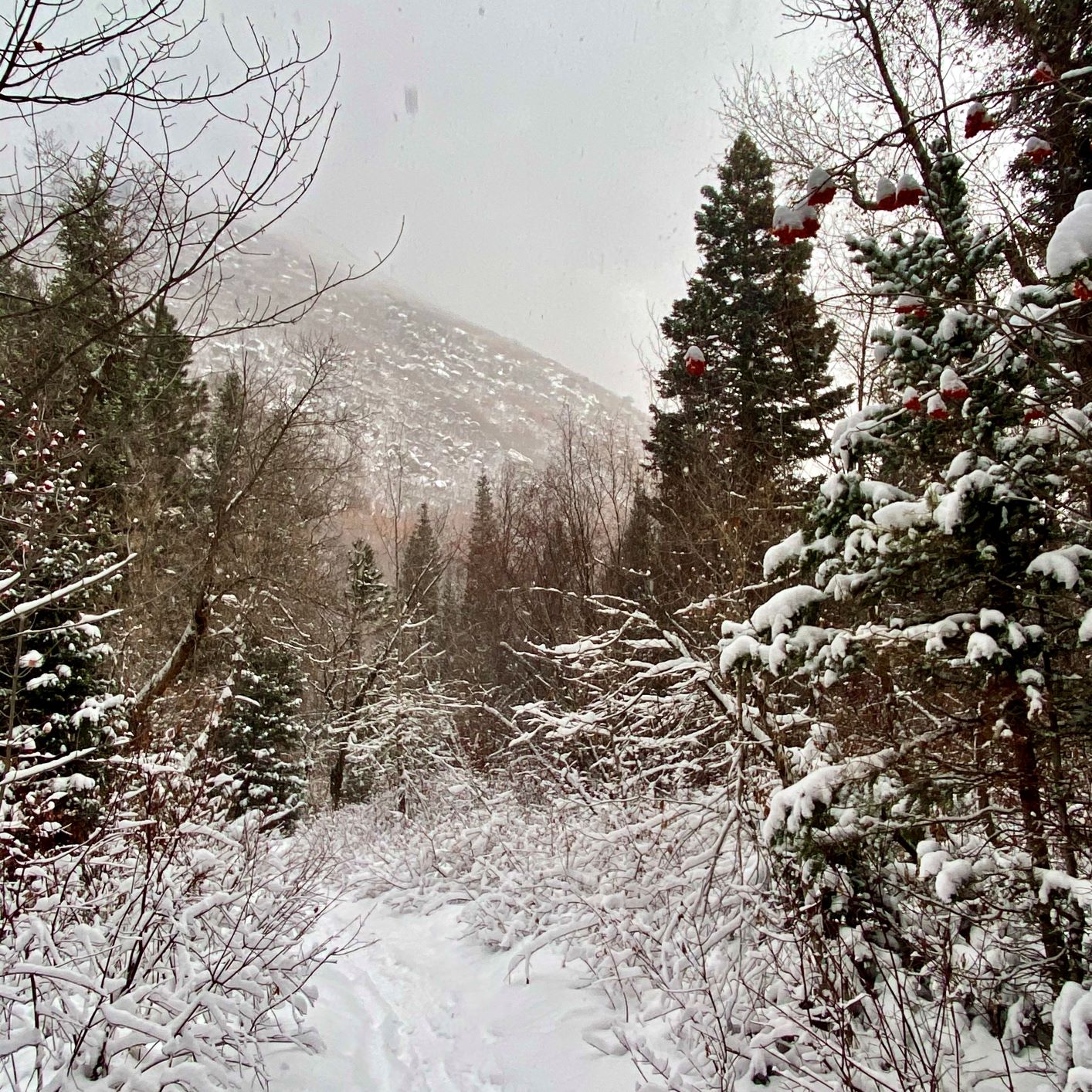Don’t Let the Cold Keep You From Getting Outside
A few years ago I heard a Scandinavian saying that stuck with me, “There is no such thing as bad weather, only bad clothes.” Snow is drifting down here in Salt Lake City but that doesn’t mean we can’t go for a hike! If you are going on a winter day hike, here are a gear list and tips on how to layer your clothing to stay warm on the trail.
Wear Layers
Wearing layers is the key to staying warm in winter hiking. Air is a great insulator. Layers trap air close to your skin to keep you warm. As you hike, pay attention to your body. If you start sweating, it is time to take an outer layer off. This will keep your base layers dry and you from getting chilled.

Winter Hike Checklist
Gear:
- Trekking poles: Trekking poles
give you more points of contact and stability on slick terrain- it’s kinda like hiking with 4-wheel drive. You can use them to test just how deep the snow is on snow-covered trails and avoid getting wet at water crossings.
- Headlamp: just in case you get caught on the trail while it’s still dark; the sun sets so early in winter. The Black Diamond Spot
is a good option.
- Sunglasses: hiking in the snow on a sunny day? You’ll be glad you have these.
What to Wear
Feet:
- Waterproof Hiking Shoes or Boots: Water-proof hiking shoes with GORE-TEX are a good bet. I use the Salomon Women’s X Ultra 3 GTX
(men’s version here)
High-cut boots keep snow and debris out or you can wear gaiters over a hiking shoe.
- Wool Socks: Darn Tough
socks are warm and live up to their name.
- Spikes: these puppies are my favorite winter gear item. They provide incredible traction on ice and snow which is especially important while going down steep trails. Kris and I have Kahtoola MICROspikes and they have never let us down.
Hands:
- Mittens or gloves: I prefer mittens over gloves because your fingers can help keep each other warm. It’s also easier to tuck hand warmers into mittens.
- Hand or toe warmers: My hands and feet are almost always cold- I never hike in the winter without these stashed in my pack.
Head:
- Beanie or headband
- Buff or balaclava: Great for protecting your face if it is snowing or windy.
Upper body:
- Base layer: This layer will be right next to your skin so it’s important that it is synthetic or merino wool fabric- no cotton please! A short-sleeve or long-sleeve shirt will do just fine.
- Mid-layer of merino wool or fleece: I have a couple of Smartwool
merino wool 1/4 zip mid-layers (men’s version here)
. They are pricey, but I’ve had luck finding them at Sierra and TJ Maxx at a discount.
- Puff jacket: Puff jackets are going to be the big-ticket item on this list, but the good news is that a quality puff jacket will last you several years. I have this one – at 7.3oz it has a great weight-to-warmth ratio. I even wear it while camping or on alpine hikes in summer months. If it is really cold you may want to get a puff jacket with a higher grade of down fill for extra warmth.
- Waterproof rain jacket: I usually pack my rain shell
(men’s version here
)
while hiking in the winter to shield from wind even if it’s not raining. Many options have armpit vents which help keep you getting too warm while you are moving.
Lower body:
- Leggings or long underwear: Again your base layers should made of synthetic material or merino wool. My go-to leggings are a couple years old but they are similar to these
. Please avoid jeans! Denim is made of cotton which dries slowly, chafes (ouch), and will not keep you warm when you sweat or if you get caught in rain or snow.
- Hiking pants: Wearing hiking pants over leggings is optional. You really only need it if you are concerned about rain or snow on your hike or if it is especially cold.
Food and Water:
- Bring energy-rich snacks like trail mix or jerky
- Water bottle, if you prefer a hydration system be careful that water in the hose does not freeze- sip frequently!
- Bring an insulated thermos with warm drinks
- Don’t forget the sunblock

How Cold is too Cold for Hiking?
If you are planning a day hike in colder temperatures, it’s important to think about elevation and the wind chill. Higher elevations will be colder than low elevations. Wind chill helps us understand how heat is lost from our bodies at a greater rate when we are exposed to high winds at low temperatures.
This chart will show you when you will be at risk of frostbite. For example, if it is 5°F (-15°C) and you have 30 mph winds, the wind chill is -19°F (-33°C) and unprotected skin will be at risk for frostbite if you are outside for >30 minutes.

Check the weather forecast before you go on your hike. If you have a weather app, they will likely have a wind chill warning or advisory if it is dangerously cold out.
The main thing to keep in mind is this: you need to be able to cover your skin, including your face. If the temperatures dip lower than you anticipate, exposed skin will be at risk of frostbite.
Don’t let the winter weather keep you from getting outside. Layer up, pack the right gear, double check the forecast and you’ll have an awesome and safe winter hike.











Leave a Comment